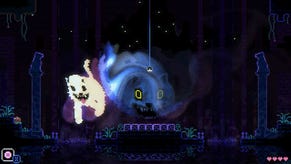AyaNeo Air 1S/ AyaNeo 2S review - faster than Steam Deck but what about ROG Ally?
Ryzen 7 7840U: power scaling and performance from 15W to 33W.
We compared all devices at 15W in our initial tests for two reasons. First of all, we have like-for-like performance numbers up against the Steam Deck. Secondly, there's a strong argument that 15W is the top-end SoC power you should be targeting in order to get decent battery life, especially on Windows handhelds which continue to be inefficient up against the SteamOS-powered Deck.
However, as shall become abundantly clear from the numbers, Mason, there's a substantial boost to performance once we breach the 20W barrier - enough to give you that game-changing boost we're looking for compared to Steam Deck. However, it's important to realise that this is going to make battery life highly problematic. The power consumption measurements here are for the processor only. On top of that, you need to factor in the mainboard, the display, the memory and storage.
I chose to use the AyaNeo 2S for benchmarking here as it offers up to 33W power consumption on the SoC, which it can also draw without mains power. The AyaNeo Air 1S maxed at just 20W running from battery, which rises to 25W on the ROG Ally. Check out the next page for those 'max portable performance' comparisons. You'll also see mention of 'Smart TDP' here, which is an AyaNeo feature baked into its new AyaSpace 2 software. This seems to rein in CPU turbo boost on certain titles at high wattages, ensuring the GPU gets more of the available power. On the AyaNeo 2S, this typically means consumption between 22W to 26W, but the numbers here suggest that it needs more work.
Forza Horizon 5
In the Playground masterpiece, there's a 23 percent boost to perf at 720p moving from 15W to 22W, then a 34 perecnt boost at the 2S's max 33W. So, that's over twice the power draw for just 34 percent more performance. The Smart option here draws 22W according to AyaNeo's own metrics, but seems to be about five percent slower.
The situation is much the same at 1080p, where I saw similar performance differences and where the Smart TDP option sees a 22W power draw with a four percent drop to performance against a straight 22W setting within AyaSpace 2.
Forza Horizon 5, High Settings, 4x MSAA
Cyberpunk 2077
With Cyberpunk 2077 at native 720p, moving from 15W to 22W delivers 40 percent more performance, rising to 61 percent at 33W, but that is drawing over twice the power. Smart TDP here is drawing around 26W of power according to the onscreen display, but the lowest one percent scores look odd.
At 1080p, the scores are a lot lower, but the percentage differentials in performance as we step up the power brackets remain almost identical to 720p - the difference this time is that the 26W being consumed by Smart TDP is producing better performance than the 22W mode, but not by much - it's just four percentage points to the better.
Cyberpunk 2077, Medium Settings, TAA
A Plague Tale: Requiem
A Plague Tale: Requiem leans heavily into the GPU on low settings here, and there's still an appreciable bump moving from 15W to 22W, but it's lower than before, at 23 percent on average across the benchmark. Stacked up against 15W, over double the power at 33W delivers a less-than-stellar 35 percent increase to frame-rates. Smart TDP here seems to level out at 26W and sits between the 22W and 33W scores.
Moving onto 1080p, there's just a 22 point increase to frame-rate from 15W to 22W and just a 28 point uplift comparing 15W to 33W. Smart TDP here consumes 25W to 26W, but bafflingly performance is basically the same as the 22W score. There are run by run variances as I mentioned earlier, but even so, I'm struggling to see much utility to the Smart TDP option and it's essentially forced on by AyaSpace 2.0 if you move to a higher wattage and takes quite a bit of effort to disable.
A Plague Tale Requiem, Low, TAA
Hitman 3
Our final scaling test is Hitman 3 at default settings - and to be honest, we don't learn much new here. In fact, scaling across the power bands highlights that 22W is the sweet spot once again, with a 29 point boost to performance over 15W. However, both Smart TDP and full-on 33W provide nothing much further and once again, Smart TDP is a touch slower on aggregate against the straight 22W option. A meagre six percent boost from 33W vs 22W is not great.
1080p delivers much the same outlook to be honest, though the increase in performance from 15W to 22W rises to a more respectable 37 percent. SmartTDP is again a bit slower than 22W, while a seven point boost between 33W and 22W is a literal waste of energy.








